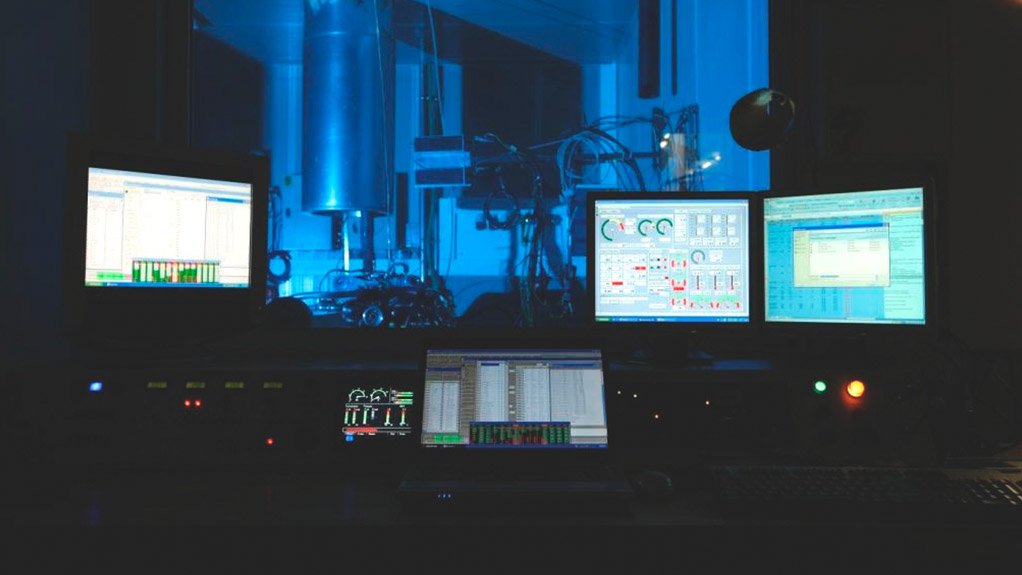To achieve international harmonisation in the qualification and certification of nondestructive testing (NDT) personnel, the national ISO 17024-accredited personnel certification body, the Southern African Institute of Welding – Certification (SAIW – Certification) is collaborating with national NDT society the South African Institute for Nondestructive Testing (Saint) to create a multifaceted personnel NDT qualification and certification process.
This process is to be implemented by the newly established Saint Professional Body for NDT.
SAIW – Certification NDT manager Harold Jansen tells Engineering News that the process should be presented for public comment before the end of the year, with implementation set to follow through an agreed transition period with the system being fully operational by end-2017.
Process Outline
The qualification and certification process of NDT personnel will be based on the international norm of ISO 9712 and will accommodate both the American Society for Nondestructive Testing SNT-TC-1A requirements, as well as end-user site authorisations.
Jansen explains that the ISO 9712 relates to the basic NDT qualification, as demonstrated during the independent qualification examination and certification process, relating to the physical attributes, knowledge, skills, training and experience required to properly perform industrial NDT tasks based on international codes and standards and related to defined industrial or product sectors.
The recommended practice, SNT-TC-1A, relates to company-specific qualifications as well as the demonstrated skills and knowledge, documented training and experience relating to personnel who are required to properly perform the duties of a specific job within the company environment and based on company quality documentation. The requirements also provide guidelines for employers to establish in-house authorisation/company certification programmes for the company- specific qualification and certification of NDT personnel.
SAIW – Certification and Saint decided to introduce the integrated process to eliminate the discrepancies between – and different preferences of – the ISO 9712 and SNT-TC-1A requirements in the power generation and petrochemicals industries, which make it difficult for one technician to simultaneously facilitate all the requirements by ensuring the work done meets the requirements of both, says Jansen.
“Firstly, qualification and certification need to be paired with the individual’s abilities, basic qualification and personnel certification, which are completed in accordance with ISO 9712 and SNT-TC-1A requirements; secondly, with formal training provided by an approved training body, based on the international codes, standards and procedures of the defined industrial or product sectors; and thirdly, with a qualification examination,” says Jansen.
This combination is paired with industrial experience, which is subsequently linked to individual company NDT authorisation, codes and procedures.
Jansen notes that industrial experience is also managed by company Level 3 employed or subcontracted NDT personnel in accordance with the company’s quality manual or written practice, which means that Level 3 personnel would be responsible for the mentoring programme, as well as the company authorisation assessment.
To ensure that the information supplied by a qualified, certified and authorised technician is accurate, the process should include a ‘licence-to-operate’ assessment on equipment, similar to equipment found on site, that contains typical discontinuities that would be expected, he says.
Jansen explains that these assessments are similar to the site authorisation assessments performed prior to petrochemicals major Sasol’s yearly shutdowns and State-owned power utility Eskom’s Koeberg outages, which required the technician to inspect typical components at the various plants.
He also suggests another process, which involves a system of continuing professional development (CPD) points at all levels of qualification for NDT personnel to remain informed of the latest developments and to ensure continuous personnel development.
“These processes would fall under the Saint Professional Body for NDT and would lead to the candidate being designated according to the qualification levels from Level 1 – Operator, Level 2 – Technician and Level 3 – Technologist,” says Jansen.
Consequently, NDT technicians would be awarded a designation for the power generation sector or the petrochemicals sector, regardless of the qualification source, based on the same basic training, examination and personnel certification, he says, adding that the authorisation would be company specific.
Jansen notes that the process might have to take place on a yearly basis, but believes that industry might extend it to a two-yearly cycle.
However, while this process could address long-standing issues regarding the qualification and certification of NDT personnel, he believes that only “proper implementation” would ensure success.
“This means that the NDT fraternity would have to manage, maintain and take responsibility for all aspects required, with regular interaction with the end-users to ensure a feedback loop is created, through which constant improvement can be achieved,” Jansen stresses.
Nevertheless, once the process has been implemented, the local NDT industry will show an acute educational growth stage, as the process would stimulate realignment in the industry’s mindset regarding NDT qualification and certification, he concludes.
Edited by: Samantha Herbst
Creamer Media Deputy Editor
EMAIL THIS ARTICLE SAVE THIS ARTICLE
To subscribe email subscriptions@creamermedia.co.za or click here
To advertise email advertising@creamermedia.co.za or click here













